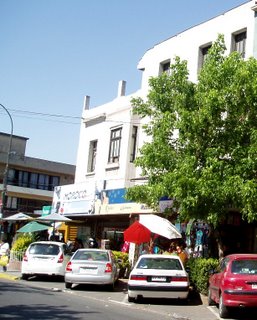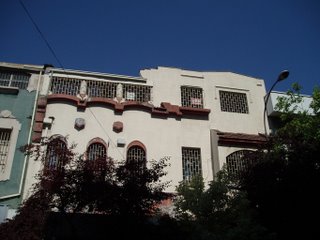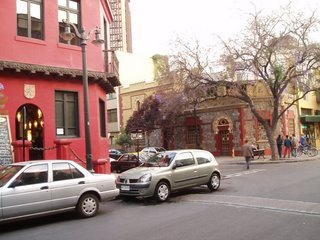Santiago's Barrio Patronato
 Santiago's Barrio Patronato
Santiago's Barrio Patronato
by Beatriz C. Maturana
Barrio Patronato is an important commercial area in Santiago, Chile. This area was known for its bazaars, textile and clothing industry and for the traders from Turkey, Syria and Lebanon, who arrived around 1890’s and were followed by Palestinians after the Second World War. These migrants settled in what then was the periphery of the city, with affordable land, close to the river, the markets and the orchards.
While keeping its old and mostly shabby colonial building typology, this large city area had a foreign feel to it. Here, non-Spanish languages, were often spoken by the traders who listened to Arabic radios stations and arabic music. Since its beginnings, Chile has received and continue to receive migrants from all over the world, (with the exception of the period of dictatorship between 1973 and 1989), and these quickly integrated and became as Chileans as anyone else. Those foreign surnames - to which most Chileans are so accustomed, that are not even considered foreign - fill the list of Chilean professionals, artists, politicians and business people. So, to me, it does not come as a surprise that, one of the best photographic exhibitions I have seen on today’s Afghanistan, entitled "Kabul", has been produced by a Chilean artist Tomás Munita (http://www.tomasmunita.com/). The bond is there, it is genealogic, cultural and one of affection.
Since its beginnings, Chile has received and continue to receive migrants from all over the world, (with the exception of the period of dictatorship between 1973 and 1989), and these quickly integrated and became as Chileans as anyone else. Those foreign surnames - to which most Chileans are so accustomed, that are not even considered foreign - fill the list of Chilean professionals, artists, politicians and business people. So, to me, it does not come as a surprise that, one of the best photographic exhibitions I have seen on today’s Afghanistan, entitled "Kabul", has been produced by a Chilean artist Tomás Munita (http://www.tomasmunita.com/). The bond is there, it is genealogic, cultural and one of affection. After 30 years of economic policies that destroyed much of the Chilean national industry in favour of cheaper imported goods, Patronato still shows resilience. Arab cafés with its falafels and sweets, and textile businesses - with goods manufactured by Chilean-Palestinian men and women - still manage to fill the streets against the economic odds of a global economy and the gentrification taking place around “Barrio Bellavista”, next to this city area.
After 30 years of economic policies that destroyed much of the Chilean national industry in favour of cheaper imported goods, Patronato still shows resilience. Arab cafés with its falafels and sweets, and textile businesses - with goods manufactured by Chilean-Palestinian men and women - still manage to fill the streets against the economic odds of a global economy and the gentrification taking place around “Barrio Bellavista”, next to this city area.
Patronato represents part of the migrant history that has shaped the Chilean history.
Some studies have been undertaken in relation to this part of Santiago’s city history (see link below). However, I believe that more could be done to assist the preservation of the cultural tradition that makes Patronato what it is, and to ensure that its future maintains and acknowledges the culture from which this city has benefited.
Find more about “Barrio Patronato” (Spanish): Antropología Urbana, http://www.antropologiaurbana.cl/pdfs/estudios/patronato_presentacion.pdf
Photos:
1 - Barrio Patronato , business spills to the streets
2 - Barrio Patronato, its architecture
3 - Barrio Bellavista, cafés, theatres, and murals define this increasingly cultural and gentrified area
4 - Museo de Bellas Artes in Santiago, entrance to the gallery room exhibiting the photographic work of Tomás Munita


0 comments:
Post a Comment